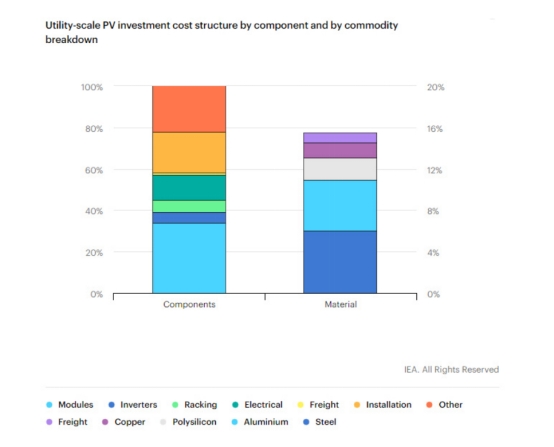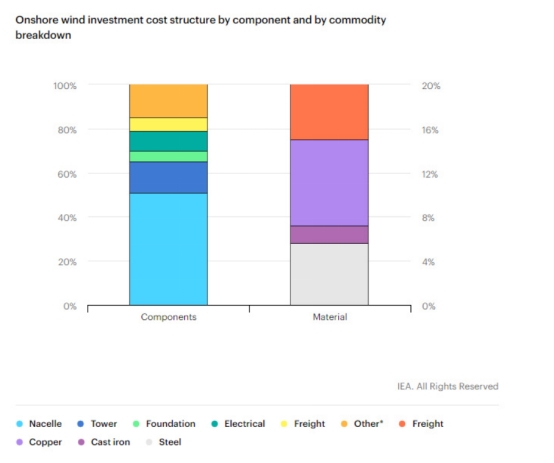

How do commodity prices affect the investment costs of solar PV and onshore wind?
We estimate that key commodities and freight costs make up about 15% of total utility-scale solar PV and onshore wind investment costs. Solar PV’s largest cost component is the manufacturing and shipment of the module, which is directly affected by the price of polysilicon, steel and aluminium. Inverter and electrical installation costs depend on the price of copper, while all components are impacted by increasing freight rates. Steel contributes the most to the final cost of wind installations, as large quantities are used in manufacturing and construction of the tower, nacelle and mechanical equipment. Freight can make up to 6% of total onshore wind investment costs, as the transport of bulky elements with specialised ships is required.
Upfront capital and associated financing costs are 70-80% of the levelised cost of electricity generation for wind and 80-90% for solar PV. Thus, any increase in initial CAPEX greatly affects the profitability of the investment. We estimate that the overall investment cost of utility-scale PV and onshore wind plants could increase by around 25% due to the commodity and freight price surge, based on a comparison of average commodity prices between 2019 and 2021.
Increases in commodity prices do not immediately affect investment costs, as developers, manufacturers and other parts of the supply chain usually maintain stocks of materials and have contracts based on previous prices. However, the increase in raw material and logistics costs ultimately affects the whole value chain and could result in a higher cost of electricity generated at renewable installations. Different areas of the value chain, such as manufacturers, equipment installers and developers, can absorb cost increases in different ways, with some sectors being more affected than others. Additional hedging mechanisms, the sharing of costs or the strategic distribution of equipment are all options developers can use to minimise the impact of increased costs in the short term.